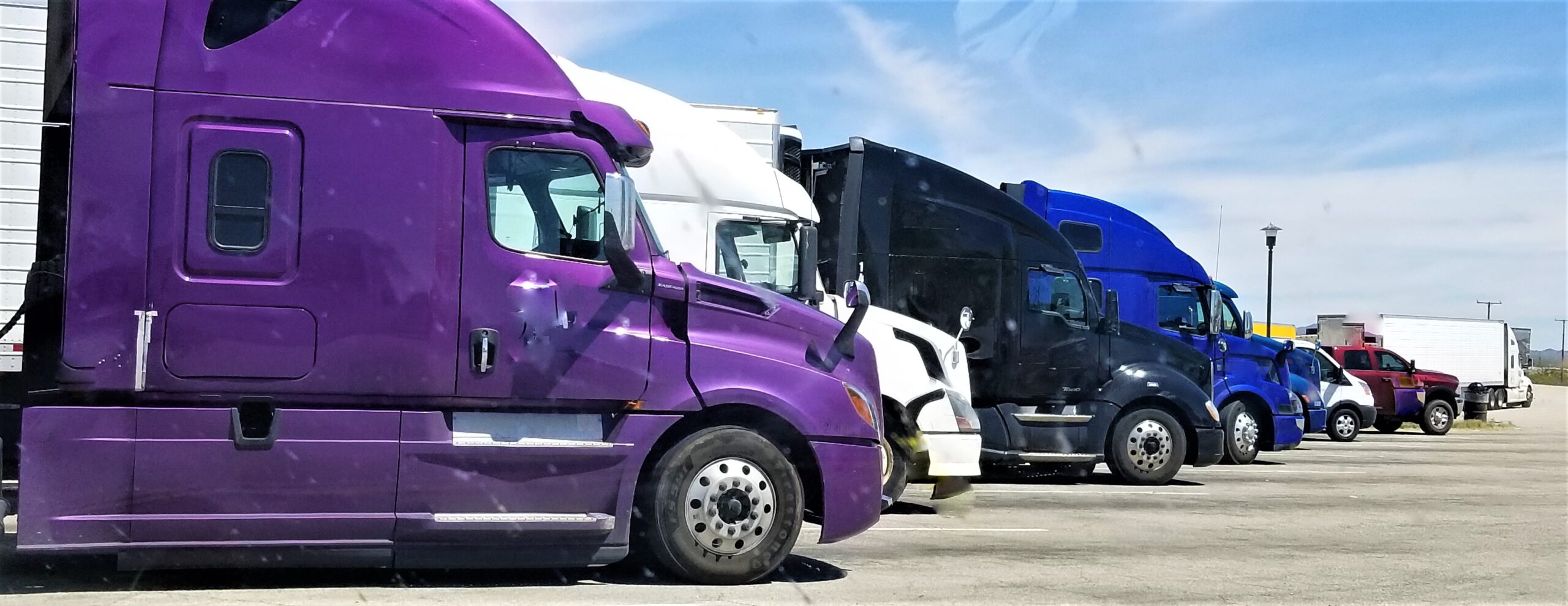
Thorn Valley’s Safer Driving Quarterly Newsletter shares tips and resources to keep you safe on the road! This quarter we’re looking into the ATRI study that correlates State Trucking Association Membership with safer trucking companies, as well as the pending UAW strike and its potential effect on the supply chain. The videos are worth the watch! In “Ask Thorn Valley” we discuss DOT compliance vs. insurance risk management.

Do Trucking Associations Make Drivers Safer?
Fresh research conducted by the American Transportation Research Institute has revealed that trucking companies affiliated with state or national trucking associations exhibit greater safety records compared to those that are either former members or have never been associated with such organizations. In this week’s discussion, Dan Murray, Vice President of ATRI, shares insights on the study’s findings and their implications for motor carriers nationwide.

The Auto Industry Strike and it’s Impact
Currently, the U.S. automotive industry is facing potential labor strikes if agreements are not reached. Three major Detroit automakers, namely General Motors, Ford, and Stellantis, have contracts set to expire with the United Auto Workers union. The unions are demanding higher wages, the reinstatement of cost of living adjustments, the restoration of medical benefits for retirees, and other related matters.

Ask Thorn Valley
DOT Compliance vs. Insurance Risk Management
Here is a recent question that came in from one of Thorn Valley’s field associates;
“I have an assignment for a non-CDL motor carrier that only operates within the state of Texas. They’re not an interstate carrier. While they are not subject to the FMCSR’s (per se), loss control is required under TDI (Texas Department of Insurance) regulations. Should I “curtail” (the loss control survey) to say “state” (as opposed to federal)?”
Short answer – “Yes”
Exposure
Non-CDL Intrastate commercial driver, Business Auto Liability, Non-DOT regulated risk.
This is a good reason why the insurance company hires Thorn Valley for their Specialty Auto commercial loss control. We help them look at all of the risk management practices that are (or are not) in place, while pointing out the ones that are also DOT regulated, and the exposures these can create for potential claims the fleet auto policy must respond to.
In this example, the TX non-CDL intrastate motor carrier is exempt from the FMCRS’s under TX statutes. However, compliance-related areas like driver screening, hiring, orientation, and training are still relevant to all “small vehicle” fleet safety matters and should be in place as standard Risk Management best practices. Granted, a certain insured may not need to maintain a Driver Qualification File “per FMCSR 391.11” However, fleet management should still document all safety practices, including driver hiring, evaluation (including MVR) and safety training. If the fleet is not doing these things, this could result in a Below Average or Fair opinion of risk by insurance Loss Control standards. Not only that, in the event a crash is litigated, the company can be targeted by plaintiff’s bar, just like any trucking company for a nuclear verdict, whereby settlement will likely exceed the primary auto policy limit. With limited or no excess/umbrella coverage, this has forced companies to close their business.
Example 1
A 2012 case in Corpus Christi, TX involved a Coca-Cola employee, legally talking on her cellphone (hands-free) while operating an automobile (not a truck), who caused a crash injuring Janice Chatman-Wilson. This wound up as an EIGHT figure settlement against Coca-Cola. The reason given by the jury was, although Coca-Cola had a cellphone policy, they had not made sufficient effort to communicate and/or enforce this policy amongst their field operations > Coca Cola Settlement. Even though the vehicle was not regulated, this event, combined with the rising danger of distracted driving due to cellphones in the early 2000’s, became a leading contributor towards the enactment of FMCSR § 392.82 Using a hand-held mobile telephone, which regulates commercial drivers. Non-commercial driver cell phone laws vary by-state.
Example 2
FMCSR 391.11(b)(1) sets the interstate commercial driver minimum age at 21, while several states allow the driver to be 18. The 18-year-old interstate commercial driver is currently under review by FMCSA > Safe Driver Apprenticeship Pilot (SDAP) Program. For years, while the interstate commercial driver minimum age has been 21, several states (like TX) have allowed 18-year-old intrastate commercial drivers. What’s strange is that, while it’s legal for an 18-year-old to drive a tractor-trailer from McAllen to Gainesville (565 miles, 8 hours) or from Houston to El Paso (745 miles, 10 hours), once they get to Oklahoma or New Mexico, they’re no longer legal to drive. Both of these examples, although they are intrastate, would be considered Long Haul (501+ miles) for rating purposes.
Summary
Small vehicle fleet safety is applicable to just about every aspect of fleet management addressed in the FMSCR’s, e.g. Vehicle Inspection, Repair & Maintenance, Driver Fatigue and Fitness, Fleet Safety Policy and Procedures, Authorized Passengers, Distraction (cell phone) and Seatbelt Use. For split fleets (DOT + non-DOT), as well as 100% non-regulated fleets, policies and procedures should still be in place from a risk management perspective. In a nutshell, when conducting the loss control for the non-regulated fleet, instead of the words “shall, or must, etc.” when making a recommendation, Thorn Valley uses “should, or consider, etc.” It’s important to distinguish between interstate, intrastate, regulated, non-regulated, vehicle type and weight classification, as well as driver licensing requirements, and the company’s base and area of operations.
*Below is a list of states that do not enforce the FMCSR’s for Intrastate, non-CDL commercial motor vehicle operators (10,001 – 26,000 lbs. GCVWR).
| Non-CDL FMCSR Exempt States | Exceptions |
| Arizona | |
| California | |
| Idaho | |
| Illinois | |
| Indiana | |
| Louisiana | |
| Massachusetts | |
| Mississippi | |
| Missouri | |
| Nevada | |
| New Mexico | |
| Oregon | |
| South Dakota | |
| Texas | |
| Utah | |
| Washington | |
| Colorado | Only applies to vehicles < 16,000 lbs. GCVWR** |
| Pennsylvania | Only applies to vehicles < 17,000 lbs. GCVWR** |
| Florida | Only applies to 391.11(b) (DQF) & 395.3 (HOS)*** |
* Based on Thorn Valley research as of 10/4/2023
**Gross Combined Vehicle Weight Rating
***Driver Qualification File, Hours of Service
